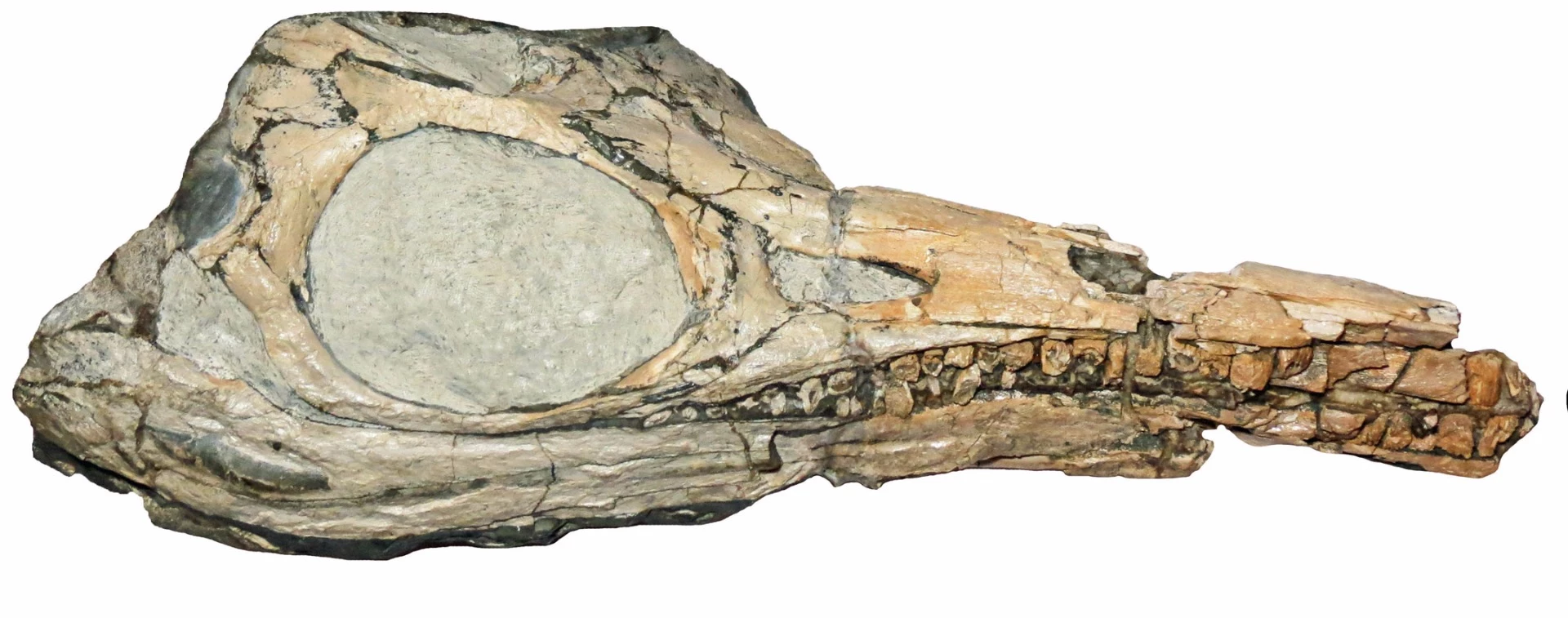It turns out you don't need to dig around in the dirt to make new dinosaur discoveries: the back rooms of museums hold just as many secrets. Over the last few months, a plesiosaur fossil in the collection of a German museum was found to belong to a brand new species, and an Ichthyosaurus skeleton was found to be not only the largest known specimen, but also pregnant. Now, paleontologists have reexamined controversial old skeletons and confirmed them to be a distinct genus – a discovery that was made, and contested, decades ago.
Ichthyosaurs were dolphin-like carnivorous reptiles that patrolled the oceans during the reign of the dinosaurs. Nowadays they're among the most commonly-dug up fossils, particularly in the UK and Europe, meaning we know quite a lot about them. But of course, mix-ups can still occur.
In 1979, paleontologist Robert Appleby inspected several ichthyosaur skeletons and found that some were different enough to declare a new genus, Protoichthyosaurus, containing two species called P. prostaxalis and P. prosostealis. But the scientific community didn't necessarily support his views, claiming that Protoichthyosaurus appeared to be just a run-of-the-mill Ichthyosaurus.
Now, paleontologists from the University of Manchester and the State University of New York have had another look at the proposed Protoichthyosaurus, and compared them to related species. Sure enough, there were major differences between the two, in the animals' skulls and particularly regarding the number of bones in the forefins.

"This unusual forefin structure was originally identified by Robert Appleby in 1979, but some of the historic specimens he examined had been 'faked,' and this fakery had been missed until now," says Dean Lomax, co-author of the study. "In some instances, an isolated fin of an Ichthyosaurus had been added to a Protoichthyosaurus skeleton to make it appear more complete, which led to the genuine differences being missed. This has been a major problem because it stopped science from progressing. We also found some pathological fins, including Ichthyosaurus fins with pathologies that mimic the Protoichthyosaurus forefin structure."
In all, the team found more than 20 examples of Protoichthyosaurus in existing collections, all of which had the same type of forefin. One particular specimen though had unique features in the skull and humerus, which led the team to identify it as a completely new species under the Protoichthyosaurus umbrella. It was dubbed P. applebyi, to honor the discoverer of the genus. It will replace P. prosostealis, which the researchers determined was not a distinct species.
The research was published in the Journal of Vertebrate Paleontology.
Source: University of Manchester








